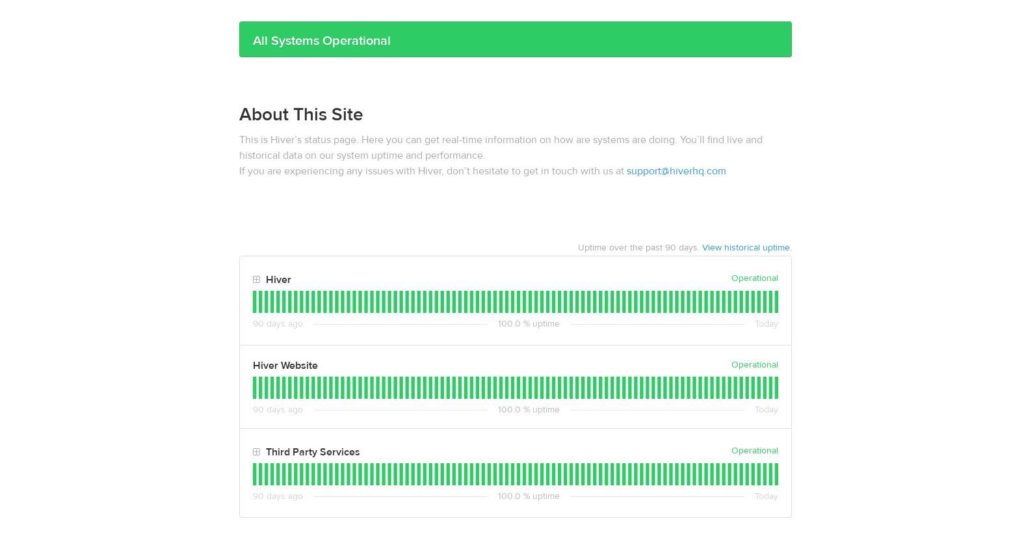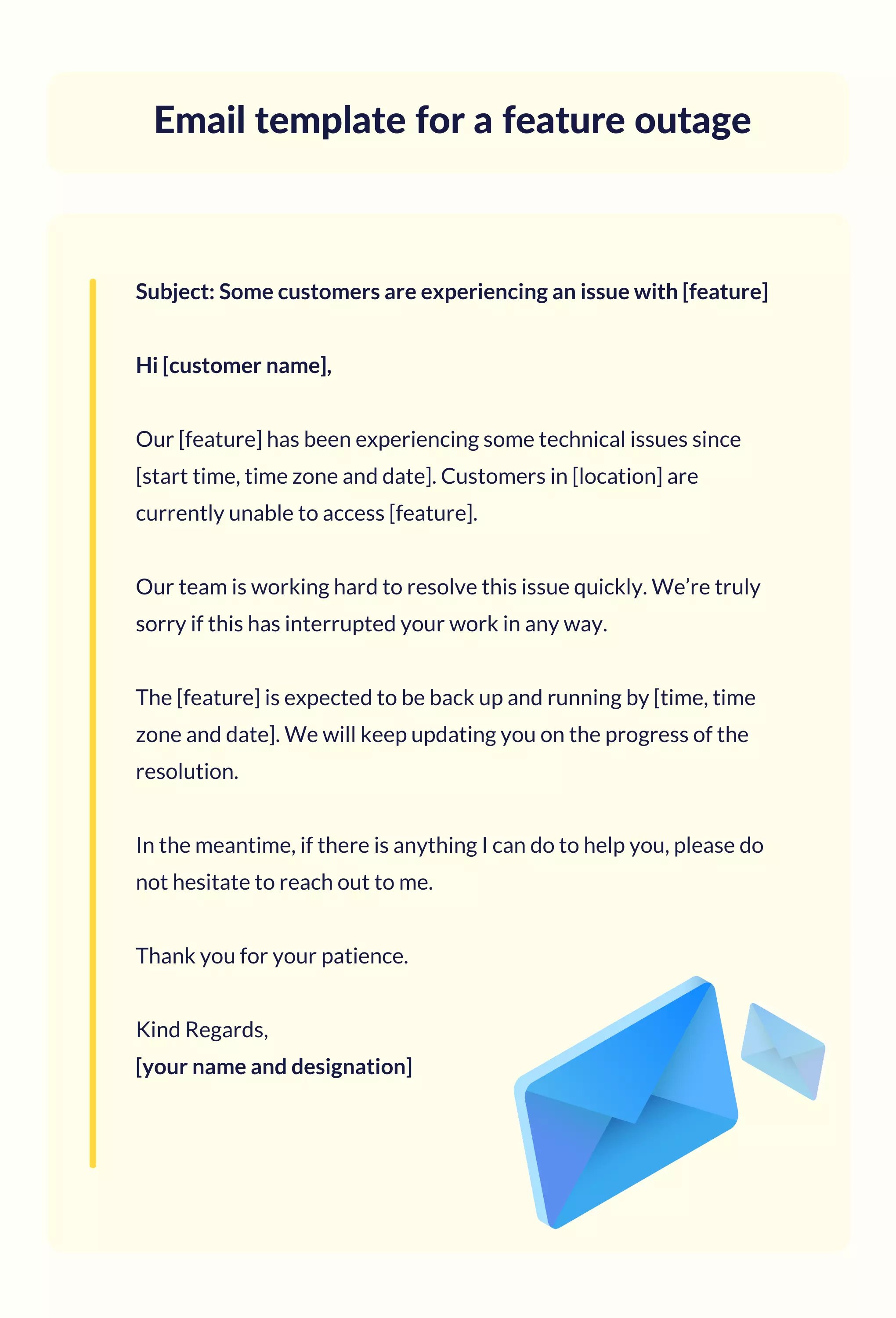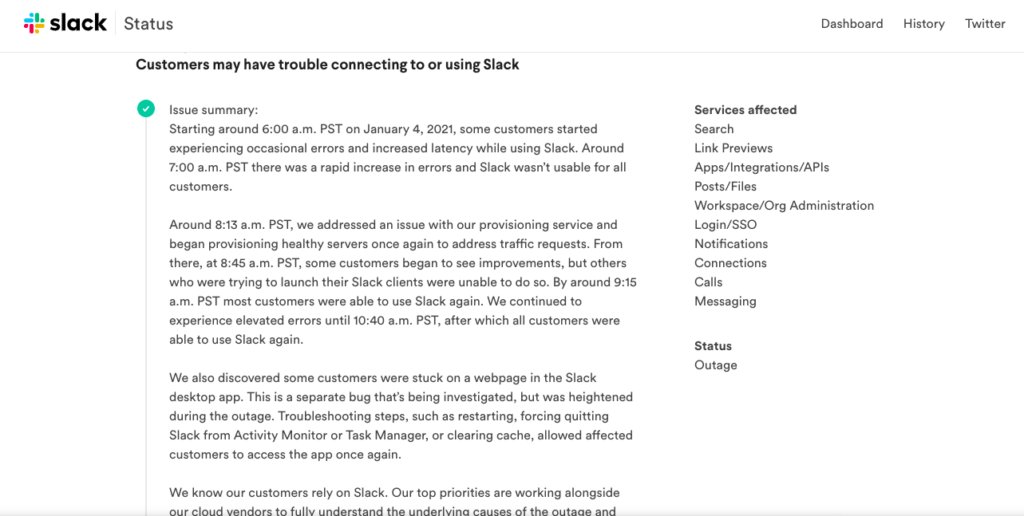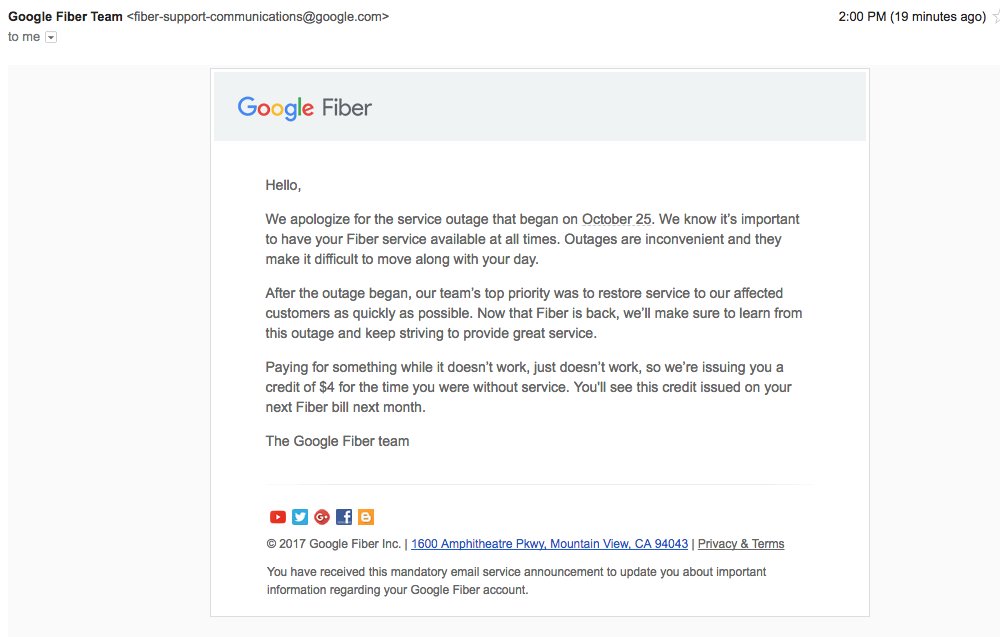How to Communicate With Customers During an Outage

Table of contents
A system outage is a hugely dreaded, frustrating, and costly affair for web-based businesses, worldwide.
According to a survey conducted in 2020, globally the average hourly cost of server outages for companies is anywhere between $301,000-$400,000 approximately.
And it’s not just these huge costs that companies have to worry about during downtime. They also have to take into account customers’ mounting anger, and the possibility of them churning, if things aren’t restored quickly.
Sometimes despite having the most robust and technologically advanced systems in place, companies might experience service outages off and on. But, how effectively and efficiently they handle them makes all the difference.
In June 2021, content-delivery network company, Fastly, experienced a technical outage for approximately an hour. Multiple websites using its servers, including Reddit, New York Times, CNN, and Britain’s government home page, briefly went down. And minutes after the outage, multiple futures markets in the US also saw a sharp dip.

That’s the kind of ripple effect outages tend to have. And that’s why incident management is important during such times. It’s crucial for the incident response teams to think on their feet, communicate the necessary information with customers quickly, and offer them speedy restoration.
That’s exactly what this post will help you do.
We’ll first go over a few tips to help you prepare your support team for an outage. Later, we’ll discuss some best practices to craft great communication that’ll help you reassure your customers should your systems go down.
Table of Contents
- Four tips for customer service teams to prepare for a system outage
- Four tips for outage communication with customers
- Wrapping up
Four tips for customer service teams to prepare for a system outage
The most effective way your support team can handle outage communication with customers is by preparing for it ahead of time. Thus, if and when such a situation arises, your team doesn’t have to waste time contemplating things. They know exactly what the plan of action is, and merely have to go about implementing the same. Here are some quick tips to help customer service teams prepare for an outage:
1. Define the severity of outages
Defining the severity of an outage for your business is the most important first step in helping you handle one when it arises.
There may be times when the outage can get fixed within a few minutes. Worst case, it might even take hours. You’ll need to set ground rules on when you should be notifying your customers about the same before it escalates. A good practice is to inform customers about an outage that lasts for more than five minutes.
Sometimes, your entire website or product may be down, sometimes it might just be a specific functionality. And sometimes, even when your product or website is working fine, they may not function at their optimal speed.
Depending on the kind of business you’re in, and how customers use your product or service, you’ll have to define the severity of the outage for your company and tailor your incident communication accordingly.
2. Prepare an information checklist
After defining the severity of an outage for your business, the next step is to make a comprehensive checklist of critical information your team needs to gather, should an outage occur. Keeping such a checklist handy will help your team think systematically, and communicate with customers faster.
The list could include questions like:
- Is the complete product or service down? Is it just a feature?
- What time did the outage start?
- When is it expected to end?
- Are all customer accounts equally impacted by the outage? If not, what all accounts are impacted, and to what degree?
- What corrective measures are being taken to fix the issue?
- Are there any temporary workarounds or back up options available for customers while the issue gets fixed?
The key is to make this checklist as detailed as possible. The more relevant information you have on hand, the more clearly and quickly you’ll be able to communicate the same with your customers.

3. Prepare an action plan
You’ll also need to predefine a standard communication plan for outages so your team doesn’t get flustered, and knows the exact process that needs to be followed during such high-pressure situations.
The action plan could look something like this:
- Get the engineering team to update your team with the answers to all questions specified in your information checklist.
- Depending on the nature of your product or service (whether technical or non-technical),ensure the right team (engineering or customer service) takes charge of updating your company’s Status Page with timely and chronological details about the outage. Check out Hiver’s status page where details of system performance and outages (if any) are updated on a daily basis.

- Send an email informing all stakeholders impacted by the outage and share temporary workarounds, if necessary.
- If you’re a B2C brand or a B2B brand with a large customer base, you may also need to share an update about the outage on your social media.
- Once the outage is fixed, send an email informing all customers impacted by the outage about the resolution.
- Respond to your customers’ emails and social media mentions regarding the outage. If possible, offer them compensation or credit for the inconvenience caused.
Again, ensure that this plan is as comprehensive as possible, and the entire team is aware of the communication process and flow. It’s a good idea to assign the responsibility of leading all outage-related communication and processes to an experienced agent in your team.
4. Create email templates for common customer queries and scenarios
One of the quickest ways your team can send out outage notifications to customers is to have a set of ready templates for possible outage scenarios and customer queries.
Templates not only help your team save time, but also ensure all your customers get consistent responses.
Work with your engineering team to understand if previous outages have followed a pattern or if specific functionalities or features are vulnerable to outages. Make a note of the most popular features in your product or service, and craft templates for instances where they may break down.
Ensure that you get your engineering team’s go-ahead on the accuracy of details included in these templates, but try to maintain a balance between the technical and human aspects in your communication. At such times, the last thing customers want is for the email to feel impersonal and robotic.

You can use the following structure as a guide to craft email notification templates for outages:
- Give a brief description of the issue – Start by briefly describing what the problem is, and when did it start.
- Offer more specific details – Provide details like which services or features are down, which region is impacted, etc.
- Provide workarounds (if any) – If there are any workarounds or alternate ways to use your service, until the issue is resolved, tell your customers about it.
- Give customers the option to reach out to you for information – Most importantly, make customers feel like they can depend on you by allowing them to reach out to you or someone in your team for further assistance.
Using the above structure, we’ve created an email template that you can use to communicate about a feature outage with your customers:

Four tips for outage communication with customers
Now that you know what it takes to prepare a detailed incident communication plan, let’s look at some additional tips that’ll help your support team effectively during system downtime.
1. Communicate with clarity and empathy
We get it. Outages are inherently technical issues, and a lot of times, your communication with customers needs to factor in those technical details. However, bear in mind that your customers are least concerned about the technical specifics of the problem your product or service is experiencing. They’re only concerned about the fact that their work is stuck because your product or service is down. It’s important that you empathize with their problem and take ownership of it – yes, even if it’s not your fault.
Instead of going with the half-hearted, “we apologize for any inconvenience caused to you”, be specific about how the interruption impacts their business continuity. For example, if your product helps aid collaboration within teams, you could say, “We understand how much you depend on our product for your team’s internal communication. We truly apologize for coming in the way of that.”
2. Keep emails short and simple
Another important factor you should keep in mind while communicating with your customers when systems break down is to avoid long emails, peppered with too much jargon. Not all customers will understand or even care about the overload of technical details you throw their way – especially in emails. It’ll only end up confusing and frustrating them more.
Try to keep the emails short, and use simple language to share only relevant information.
You could, instead, share a detailed account of the issue on your product’s status page. Check out how Slack did this for an outage they recently experienced.

3. Try to lighten things up with humor, but remember to keep it professional
Oftentimes, a great way to diffuse a tense situation (in this case, an outage),is to use humor in your communication. Especially if it aligns with your brand language.
In fact, a recent study published in the Journal of Business Research found that humor, when used appropriately, can be an effective service recovery tool for companies.
While it’s important that you maintain some decorum on your official communication channels like email, you can take a little liberty to use humor on your social channels, provided that’s your brand’s style.
Here’s how Adobe used a humorous (and adorable) GIF to get the message of an outage across to their followers on Twitter.

4. Give regular status updates and keep following up
This is perhaps the most important incident management tip we’ve for you. Make sure you continue to give your customers regular updates about your technical team’s progress on fixing the issue. Doing this is important to let them know that the issue is being taken seriously.
The rule here is to over-communicate, but not over-promise. Be completely honest in your messaging.
Post-incident communication is important too! Once the issue is fixed, don’t merely thank customers for their patience. Ask them if there’s any other way you can help them out. Tell them what measures you’re implementing, or internal changes you’re making to prevent such a situation from reoccurring in the future. You could even offer your customers a credit for the inconvenience they had to go through because of the outage.
Google Fiber, for example, compensated its customers with a $4 credit for a minor service outage that many never even realized had occurred.

Wrapping up
Service interruptions can be a huge blow to companies’ reputations and financial health. But if you plan for it properly, and have a well-thought-out communication strategy in place, you can turn the problem into an opportunity for your customer service to shine.
Effective communication can minimize the negative impact outages have on the overall customer experience. Even if the resolution takes time, reassuring customers with timely and meaningful messaging will help you earn their trust and loyalty.
Resources you’ll love:
- An informative guide on how to create an incident response playbook by Atlassian
- A listicle of 13 beautiful tools to create status pages for your business by Geekflare
- An article by VictorOps on different ways one can fail while communicating during an outage

































